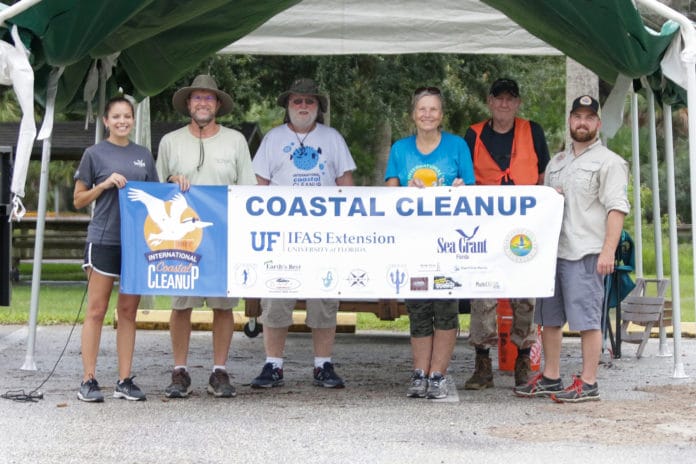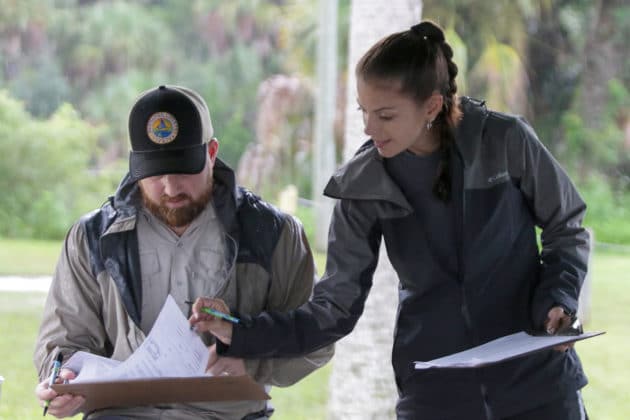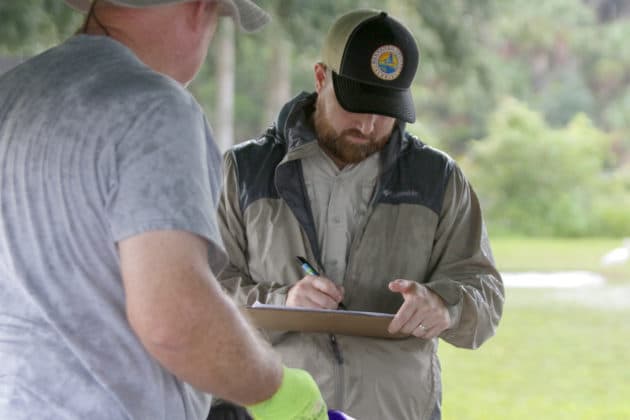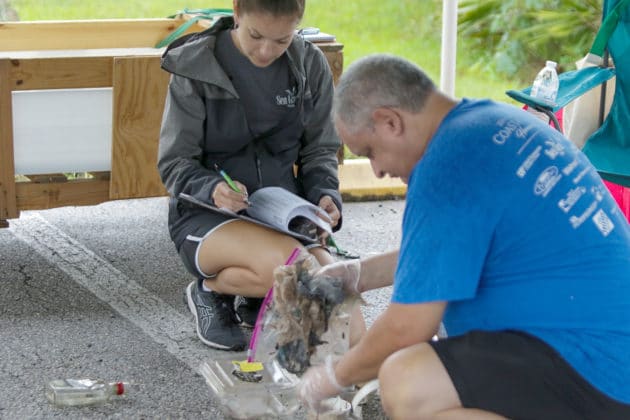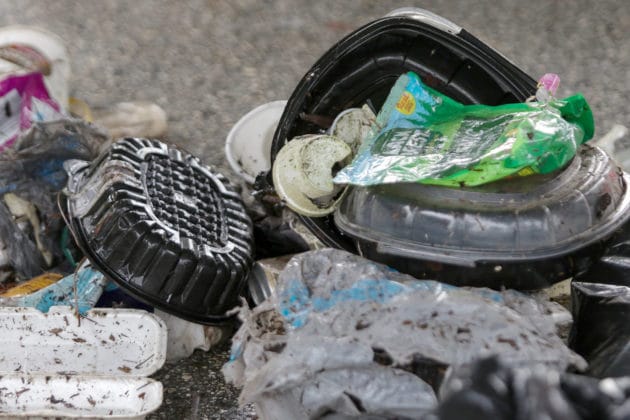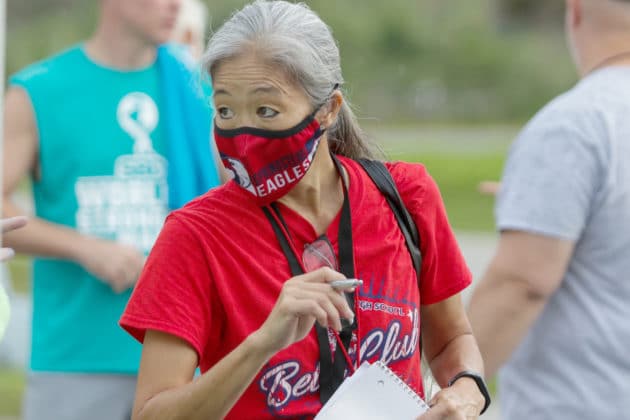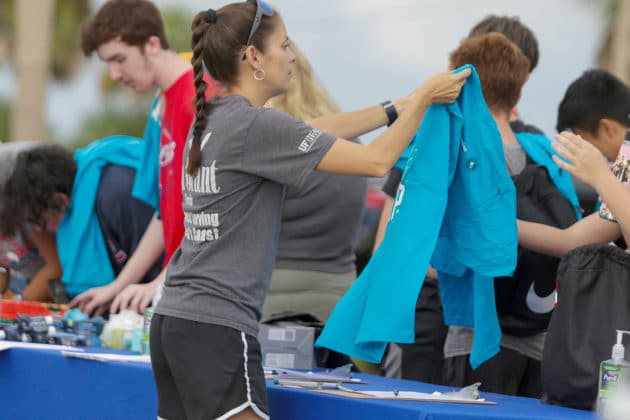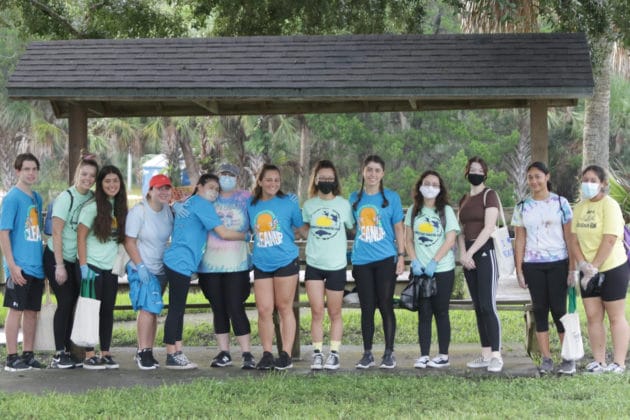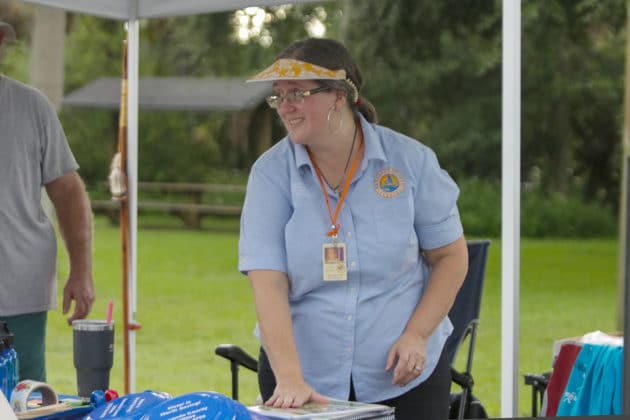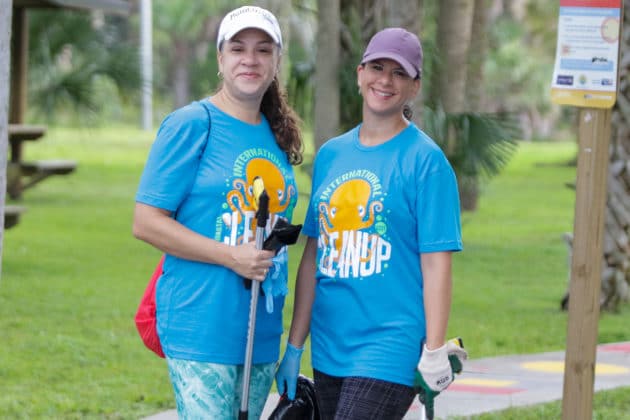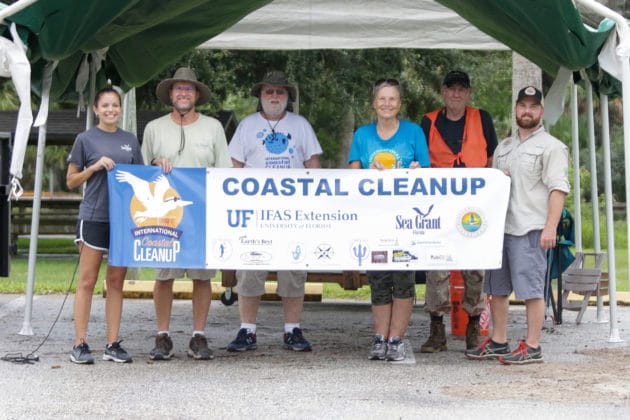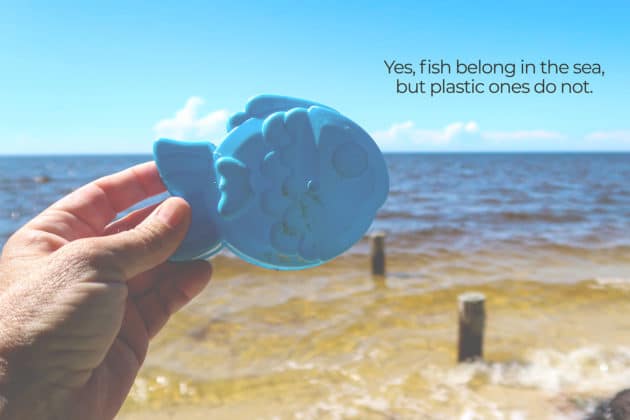Contributors: Mike Singer, Lilly Browning, and Brittany Scharf
The International Coastal Cleanup is hosted under the Ocean Conservatory Trash Free Seas® Program. On the third Saturday in September thousands of people from all over the world band together to pick up debris from the roadsides, beaches, and within oceans.
Thirty-five years ago two women, Linda Maraniss and Kathy O’Hara, colleagues from Ocean Conservancy changed the way cleanups were orchestrated. They weren’t only collecting trash along coastal shores they went beyond that to physically count what was being collected. They described in an article that they aimed to “…get tangibles… so people can get a visual and metric idea of how much trash was in the oceans.” (Talking Trash with the Founders of the International Coastal Cleanup — CleanUp News)
“Those two women were the founders of the International Coastal Cleanup (ICC) and not only did they have the concern about the trash and the litter on their local beach they had the foresight to track it,” said Sarah Kollar Outreach Manager for International Coastal Cleanup. “They wanted to record and keep track of the items that were collected and by no means, was ICC the start of all these clean-ups everywhere, but what does make it special and what has been in the DNA for all thirty fives years of the clean up is that idea that anyone anywhere can take part and be that citizen scientist.”
Pandemic
Before the pandemic in 2019, almost 40,000 volunteers collected over one million items weighing 250,308 pounds. 188,300 cigarette butts were among those items collected. Florida ranked top for cigarette butts in the United States! During the pandemic in 2020, 10,103 dedicated volunteers collected 460,532 items weighing 91,721 pounds.
“We were really heartened and thrilled that some volunteers were able to go, even in small groups, even solo cleanup situations, people went out and were able to record what they have found. Right from the get-go, we were able to see what was being littered out there and tracking things like personal protective equipment. We added that category to our app as quickly as we could. They (volunteers) wanted to be able to record new litter items that (had) risen to the top, primarily masks,” Kollar said. “It’s going to be a fascinating year, and luckily we have the historic data to look at and compare what happens in the next couple of years.”
Attitude of litter
Participating as a volunteer during the Coastal Cleanup changes the way you view litter. There is an unawareness of how much trash exists in the marshes along Linda Pedersen Park, Shoal Line Blvd, or Cortez Blvd driving to Alfred A. McKethan Pine Island Park. It prompts some to make changes to their personal choices when it comes to how they dispose of that food wrapper.
“That is one of my favorite parts of the cleanup is actually doing the collection with volunteers, walking them through the process,” Kollar said. “There’s this moment, this reflective moment that volunteers have as they are recording piece by piece. Plastic bottle cap after plastic bottle cap they kind of have this revelation of ‘Wow, these are items I use in my everyday life.’ I love that educational moment, that aspect of the cleanup is incredible.”
The Rise of Take-out
During the pandemic, the limited access to dining out led to an uptick in-home delivery. Pizza to five-course meals was considered convenient, but in turn, increased the amount of plastic and take-out containers. “A lot of us have switched over to a lot more takeout and delivery, which has been fantastic and we want to support local businesses and eateries but what does that mean for take-out containers. Those items have historically always been in our top ten items collected,” Kollar said.
Garbage Patch
Within the Pacific and Atlantic oceans, there are areas called garbage patches. As the name may be inaccurate, the debris it creates is not. There are many garbage patches within the planet’s oceans. What most people refer to is the Great Pacific Garbage Patch located in the Pacific Ocean. Debris in the ocean is pulled into the center of rotating ocean currents and are called “gyres.” Because the currents change, it’s difficult for marine biologists to estimate the actual size.
“The Great Pacific Garbage Patch, unlike what we think, it’s actually scarier than that,” Kollar said. By the time debris has reached those areas they have been broken down into tiny, tiny pieces: microplastics. This is caused by weathering during miles and miles of ocean currents and from the UV rays of the sun.
“(What) we are really trying to do is prevent trash and plastic from getting into the ocean in the first place. We hope through cleanups and through a lot of the other upstream policy changes that cleanups can inspire and turn off that path to stop plastics from getting out there into the open ocean,” Kollar said.
UF/IFAS Extension – Hernando
On September 18, 2021, 178 volunteers collected over 7,000 pieces of litter along the coastline ranging from Aripeka to Pine Island weighing in at 1,020 pounds.
“This is the 5th annual event the UF/IFAS Extension Office has organized in Hernando County, and despite the challenges we faced from the pandemic to weather, dedicated volunteers shined through to participate in this global effort to clean up debris from Hernando’s coastal waterways,” said Brittany Hall-Scharf, Marine Agent III at UF/IFAS Extension Office.
Among those items collected was a 5-gallon drum of used motor oil dumped in the marsh. “Not only are we considering the aesthetic of the coastal waterways, but we are also doing what we can to protect wildlife,” Scharf said. “Plastic bottles, fishing line to larger debris that is discarded in the marshes have a devastating effect on marine life, that includes a variety of wildlife that depend on the coastal environment to survive.”
Community Involvement
Springstead High School Coastal Club and Beta Club participated in the Coastal Clean-up on September 18th. “Between the two groups, we had about 60 kids that came and volunteered,” said Beta Club sponsor Becky Vonada.
The Beta Club is a National Honor Society that is geared towards service, environmental awareness as well as community service projects. “I think the students involved got a deeper appreciation for their own involvement within the community,” Vonada said. “The fact of being a part of a global community, and developing responsible action is something that is really imperative not just for themselves but for them to be able to pay forward.”
Vonada continues, “Hopefully, their involvement in this coastal cleanup will give them first-hand experience with the irresponsible actions of their fellow citizens and then try to educate not only other students but even adult groups on why it is so important to maintain the environment.”
Some of the students within the Beta Club are interested in becoming more involved in government action, to try and make sure there are policies, and procedures that can help train others to be more responsible. “Adults of the Future” as Vonada referred to her students.
She continued, “Unfortunately there’s not a whole lot of education internally digested by the common person. Then you have the negative implications that would result in fines or fees for being able to take care of that. The parking fees for parking in any of the Hernando parks have gone up 10 dollars apiece because environmental protection comes with a price.”
“It was a well-run program. I think the students seeing the (volunteers) categorizing the different forms of garbage that they picked up, and sort of thinking to themselves, what’s the importance of that,” Vonada said.
The answer to the question, ‘What’s the importance of that?’ probably eludes many people. Why is it important to separate and count all these items?
The few volunteers who took the time to pick up 1500 cigarette butts that were thrown out the windows of vehicles know the answer.
It’s a long task just collecting cigarette butts, but can you imagine trying to pick up every single one of them in the county? Next time you are waiting in the left-hand turn signal for the green arrow look out your car window. Can you count how many cigarette butts you see along the median? “What can we do as a community to help prevent some of this in the future?” Vonada asked.
Volunteers
Most importantly are the volunteers who make an impact by choosing to invest their time in this event. One day a year participating in a global event creates a huge difference along the coastal areas of Hernando County and beyond.
“The International Coastal Cleanup would simply not exist without the volunteers. It’s the small to the large community events that together we make this global impact every year. It’s just incredible to see what volunteers have accomplished,” Kollar said.
If you, your organization, or your school could not volunteer for the Coastal Cleanup this year, but still want to make a difference you still can! Yep, there’s an app for recording trash! Clean Swell®, is a user-friendly mobile app. “Anyone anywhere can use this app, it’s even designed for folks that walk the beach every day, and collecting a small bag worth of trash,” Kollar said. “And we are really glad that Clean Swell® is able to be that tool for folks to make that extra impact and to record and submit those numbers.”
For more information and educational resources about International Coastal Cleanup™ visit: Trash Free Seas: International Coastal Cleanup™ – Ocean Conservancy
Additional thank you goes out to the sponsors of this event for providing all of the necessary supplies and giveaways: Earth’s Best Natural Pest Management, Bayside AutoWorks, Get Up and Go Weeki Wachee, Affordable Hauling Brooksville, Outback Steakhouse Carrollwood, Blue Pelican Marina, MultiColor Media, and Monte Tolson.
Coastal Clean-Up Partners
Environmentally Sensitive Lands (ESL) Program
Mike Singer, Conservation Lands Specialist, described how the Environmentally Sensitive Lands Program benefits from the Coastal Cleanup. Singer stated, “Over the last 4 years, the Environmentally Sensitive Lands (ESL) Program has provided support to UF/IFAS Hernando County Extension Services for the annual Coastal Cleanup. The mission of the ESL is to preserve the County’s natural, cultural, and scenic resources while enhancing the quality of life for present and future generations and as such protection of the coast is critical to the mission. Hernando County maintains 3 parks on the coast with high conservation value (Bayport, Jenkins Creek, and Linda Pedersen) where the ESL program provides management assistance. These are high-priority areas during the cleanup since they receive so much use, so being able to work together with the public is a great asset.”
Florida-Friendly Landscaping
Florida-Friendly Landscaping principle number 9 is Protect the Waterfront. It stands to reason that Florida-Friendly Landscaping and Florida Sea Grant often cross paths in their attempts to protect and educate. FFL promotes activities that protect the land and the waterfront, while Florida Sea Grant takes over at the coast and wetlands.
Hernando County Florida-Friendly Landscaping Program Coordinator, Lilly Browning remarked, “I was happy to represent Florida-Friendly Landscaping at the 2021 Hernando County Coastal Cleanup. My presence at the event was mainly educational, and I was able to have conversations and provide educational and promotional material to the groups of people who came out to help keep Hernando’s coastal areas as natural and litter-free as possible. I was very happy to see a great deal of teenagers and younger children at this year’s event.”
Florida’s environment is very water-intensive, and everyone can play a part in protecting the waterfront. Even for those who don’t live directly on a waterway, what you do in your yard will eventually affect our fragile groundwater, springs, lakes, rivers, and Gulf. Here are five simple things you can incorporate into your landscaping practices to Protect the Waterfront:
o Reduce Your Chemical Use
- All too often we over-fertilize and over-treat our lawns and landscapes in an attempt to have a pristine, sterile yard. Not only is this practice detrimental to pollinators and beneficial insects but the pollutants will find their way into our waterways through stormwater runoff.
o Reduce Stormwater Runoff
- I encourage folks to hoard whatever rainwater comes onto their property. You can accomplish this in many ways. A rain barrel collects rainwater from your roof that you can use on ornamental plants, saving water and reducing stormwater runoff. Rain gardens are depressed garden areas that hold the rainwater until it can filter into the soil. Permeable surfaces for walkways, patios, driveway, etc., such as mulch, gravel, shells, bricks and pavers allow water to seep into the ground instead of running off. Direct downspouts to your lawn or a landscape bed instead of down the driveway.
o Don’t Spray the Spill
- If you spill fertilizer, don’t hose it down the driveway. Sweep it up, put it into your lawn or back into the fertilizer bag. If you have an oil spill or another chemical, clean it up with kitty litter and bag it for the trash.
o Only Rain Down the Drain
- Don’t allow grass clippings to go down the storm drain. Blow them back into your lawn. Not only do the grass clippings create a physical barrier in the storm drain, but the nitrogen and chemicals on the grass blades will also leach into the waterways.
o Evaluate Your Irrigation System
- Let your lawn tell you when to water. Leaf-blades will fold in half and footprints will remain when you walk on the grass. If those signs occur in the morning (not on a hot afternoon) your lawn will need to be irrigated on your next allowable watering day. If it rains before then, you don’t need to add extra irrigation. Check that your irrigation heads are watering your landscape and not the street or your driveway. Check for irrigation leaks.
You can Protect the Waterfront every day of the year right from your own yard. Let’s all do our part to keep Florida beautiful!

